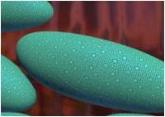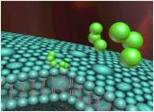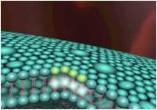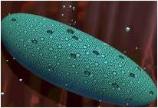- Phone: 800-492-1252
- Fax: 440-368-3569
- E-mail: info@spartanwatertreatment.com

Wastewater sludge–sometimes called sewage sludge–is a mud-like byproduct of wastewater treatment. Sludge includes anything that is flushed, poured, or dumped into wastewater systems and generally includes a mix of human waste organic matter, food waste particles, microorganisms, trace chemicals and inorganic solids.
While some sludge is expected, too much sludge can contaminate water or block it from flowing. Additionally, sludge removal is important for protecting the public along with reducing unpleasant odors. Since sludge is a difficult fluid to remove, it will require special sludge removal equipment for sludge processing.
Applying ozone to wastewater sludge through an ozonation process is very effective at reducing sludge and treating wastewater. The ozonation process has been studied extensively and found up to a 60% reduction in excess sludge.
Other observations and benefits of the ozonation process in wastewater sludge treatment include:
Activated Sludge (AS) process is a widely used biological wastewater treatment process around the world. An emerging application for ozone use in industrial wastewater treatment is the reduction of sludge generation from the activated sludge plants. Sewage plants must dispose of their excess sludge. To do so, additional processing of the sludge is required including filtration and dewatering. Below is an activated sludge process diagram:

In the activated sludge process, ozone is fed into a side stream of sludge that is recycled back to the activated sludge tanks. In some cases, the sludge must be disposed of in landfills where the plant operator must pay for hauling and disposal costs. Eliminating this excess sludge can be economically interesting depending if the amount of ozone per ton of sludge removed is low enough.
Not only is ozone effective at reducing wastewater sludge, it is also an efficient cell lysis technology for excess sludge. When ozone is applied, it attacks the cell walls of the bacteria that make up the activated sludge causing the cells to undergo lysis.
Lysis is a process where the cellular wall is breached and the internal materials leak out of the cell. Below is a demonstration of ozone treatment producing bacterial cell lysis:




In the activated sludge process, this leaked material–or cellular COD–goes back to the activated sludge tank where other bacteria consume the COD. As it turns out, this material is very biodegradable. Essentially, the ozone damages certain sludge bacteria so they can be consumed by the rest of the bacteria (biomass or sludge).
Ozone is already used at some sewage treatment plants for disinfection of treated effluent. In this wastewater treatment application, it has the benefits of improved disinfection, reductions in disinfection byproduct, and increasing the oxygen content of the water. Extension of ozone to the activated sludge process may further improve wastewater treatment plant economics and performance.
The activated sludge treatment process is an effective method to treat wastewater. Contact Spartan Environmental Technologies to discuss which sludge removal process is appropriate for you.